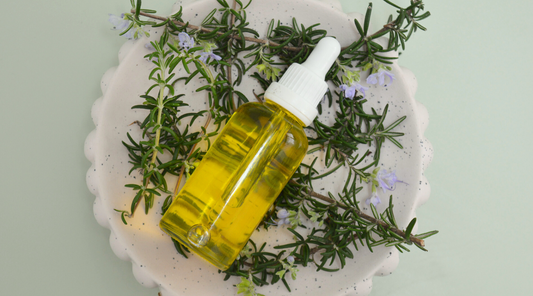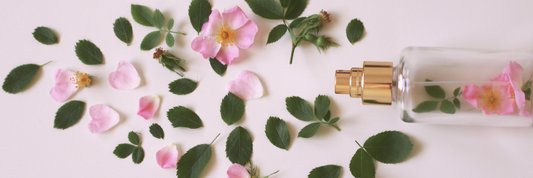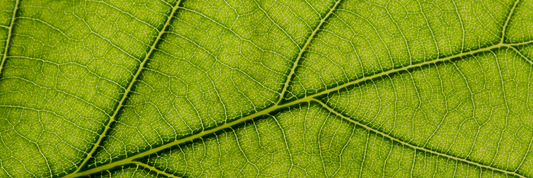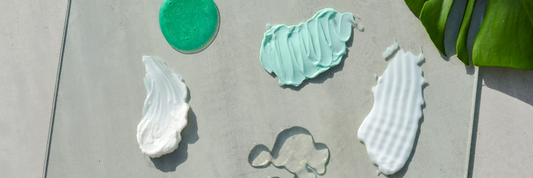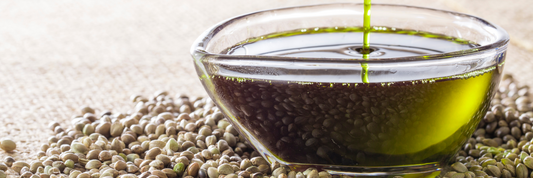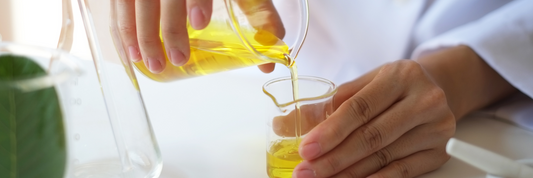Antioxidants – the term seems to be everywhere these days! Superfoods are packed with them, as are all the latest beauty products – but what are they and what do they do?
To state the obvious, antioxidants are chemical compounds that act to combat oxidation. Oxidation is the process whereby a substance gives away electrons to another substance. The most commonly used example of oxidation is rust – which is the oxidation of iron by oxygen. Another well used example is the oxidation of fats which causes them to go rancid - this is perhaps the most relevant example for those of us concerned with making personal care products.
The term ’Free Radical’ is used to describe an atom or group of atoms that have an unpaired electron and can cause oxidation. Despite their general negative press, oxidation and free radicals are essential for life as the body uses oxidation to convert air and food into energy.
However, an excess of free radicals and oxidation leads to what is known as oxidative stress. Oxidative stress can damage essential cellular components and is therefore thought to be implicated in aging and numerous disease processes.
Here is where antioxidants step in. antioxidants can give up an electron without becoming destabilized themselves – thus protecting other substances from damage.

So the health implications of oxidative stress and the ability of antioxidants to fight the process seem clear – but what do they have to do with product formulation and manufacture?
In terms of skincare and cosmetics there are two main ways we use antioxidants:
- To help protect the fats and oils in our formulation from rancidity
- As active ingredients to protect the skin against the effects of oxidation
As mentioned in our previous article – antioxidants are not preservatives as they do not act to inhibit the growth of harmful micro-organisms. However, the confusion arises as they do affect the shelf life of the oils in your product.
Where do you find antioxidants?
Antioxidants are abundant not only in our diets but also in extracts from other plants and there are even synthetic antioxidants as well. Though many of the ingredients we offer on PureNature contain or can function as antioxidants, we only promote the following products to function as an antioxidants when formulating:
Vitamin E: There are two classes of Vitamin E – the Tocopherols and the Tocotrienols. In personal care and cosmetic formulation, we most commonly encounter Tocopherols. The 4 types of tocopherol are alpha, beta, gamma and delta, the prefix relates to the structure of the molecule and each function slightly differently.

At PureNature, we offer 3 types of Vitamin E:
Natural Mixed Tocopherols: As the name suggests, this product is derived from natural materials and contains a mixture of different tocopherols. This type is the best option for natural or organic formulations to protect the fats and oils in your product from rancidity. As it naturally contains alpha tocopherol it will have some effect on the skin which is a fantastic bonus!
Natural D-alpha Tocopherol: A naturalyl derived vitamin E but only containing D-alpha tocopherol. This type is the best as an active to help protect the skin and will only have very limited function to protect oils and fats in your product.
Synthetic Dl-Alpha Tocopheryl Acetate: This is a synthetic vitamin E that has been esterified (combined with an acid) to make it more stable and able to resist oxidation better. Due to this change, this form acts well to protect the oils and fats in your product despite being a type of alpha tocopherol.
What are IU’s?
IU stands for international unit and is a pharmaceutical measurement for the potency of fat soluble vitamins – not the mass or volume. The definition of an IU differs between vitamins, but in the case of vitamin E, 1 IU is the biological equivalent of about 0.67mg of d-alpha tocopherol or 0.9mg of dl-alpha tocopherol.
Rosemary Antioxidant: Our Rosemary Antioxidant is a unique product that works just as effectively as Vitamin E to quench free radicals but also offers skin soothing and anti-ageing properties meaning it functions both as an a active ingredient and as an antioxidant. Despite coming from a highly aromatic plant, the extract is mild in odour and will not affect the odour of the finished product when used as recommended.
So when should we use an antioxidant?
The rule of thumb is that if your product contains an oil or fat, you should add an antioxidant – simple as that! If it doesn’t, you can still add an antioxidant, but it will be functioning as an active ingredient so choose your ingredient accordingly.
View the range of Antioxidants available on PureNature.
Copyright, PureNature. This information is intended for personal use of PureNature customers and may not be reproduced, shared or used for commercial purposes without written consent.




